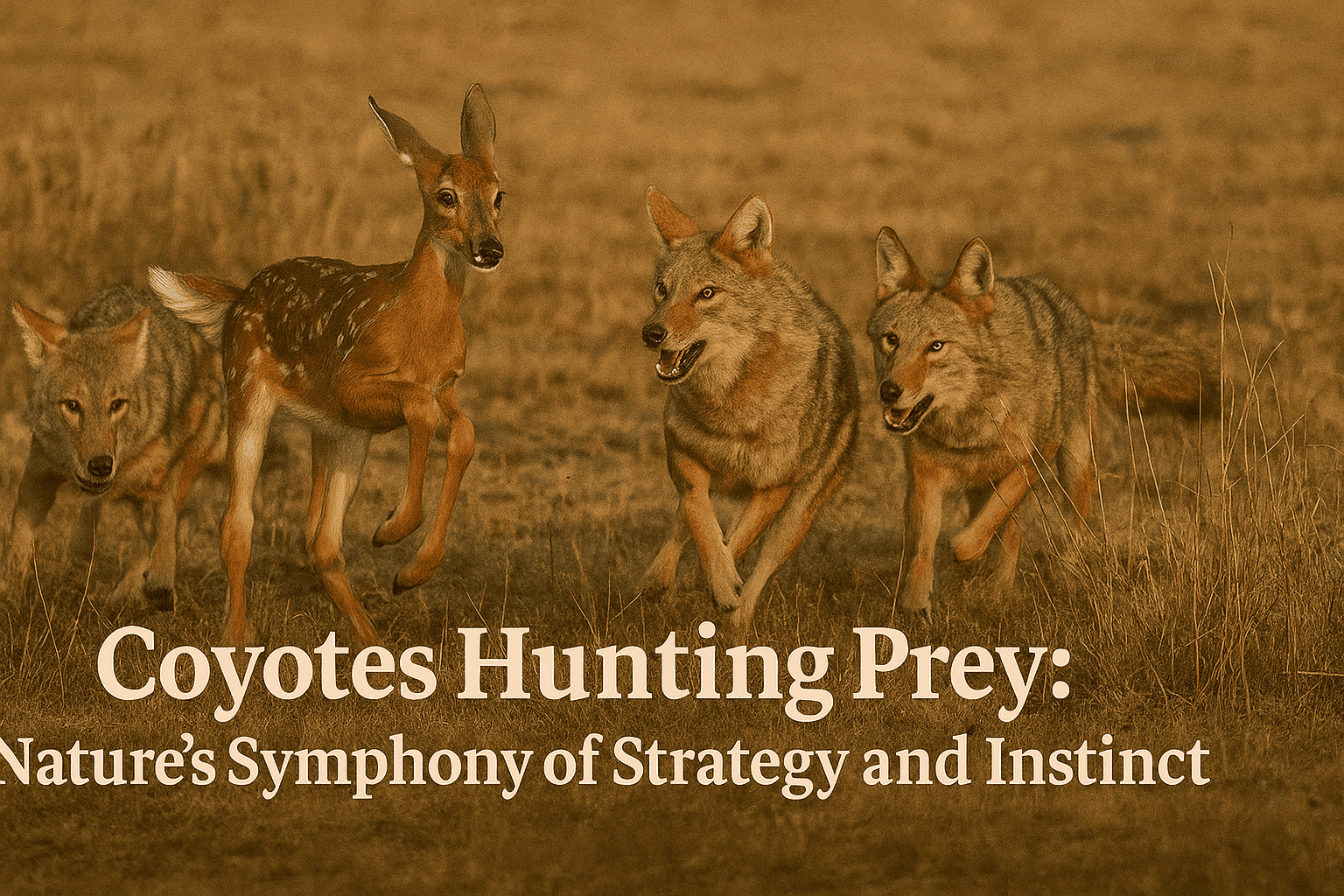In the vast arena of nature, where the grand prize is survival, ‘Coyotes Hunting Prey’ emerges as a captivating topic. Coyotes stand out as masterful strategists in this competitive realm. These adaptable creatures showcase a remarkable combination of intelligence, agility, and instinct, making their hunting techniques a subject worth exploring.
The Coyote: Beyond the Howl
Historical Backdrop
- Evolutionary Advantages
Delve into the captivating realm of coyotes as they pursue their prey. As you explore further, you’ll uncover their astute strategies, understand the intricacies of their pack dynamics, and be amazed by their adaptive hunting techniques. - Expanding Territories
In the past, coyotes were primarily found in prairies and deserts. However, demonstrating their impressive adaptability, they have now made their way into bustling urban areas. This shift not only emphasizes their versatility but also stands as a testament to their evolutionary prowess. - Physical Characteristics
With a lean frame, coupled with sharp senses, and further complemented by a camouflaged coat, every facet of a coyote’s physique is meticulously crafted for the hunt.
Decoding the Hunt
The Art of Selection
- Sensory Mastery
In the realm of the coyote, a plethora of sensory information constantly floods their perception. Firstly, their acute ears can detect even the most subtle rustling sounds. Secondly, their advanced olfactory senses capture scents that remain imperceptible to human beings. - Diverse Palate
Mice and rabbits are commonly consumed by coyotes, yet they might also eat fruits or even an unfortunate pet. This dietary flexibility allows them to thrive in diverse terrains.
The Elusive Stalk
- Masters of Stealth
Utilizing both patience and precision, coyotes subtly advance towards their prey. Consequently, this stealthy tactic enhances their likelihood of a triumphant hunt. - Terrain Tactics
Whether in a dense forest or in an urban alley, coyotes skillfully utilize their surroundings, making the environment their ally.
The Thrill of the Chase
Dash, Dive, and Capture
- Built for the Sprint
Beneath that fur lies a muscular structure that can propel a coyote to impressive speeds. This burst of speed is often the difference between a feast and famine. - The Final Lunge
A chase might end with a dramatic lunge, where the coyote uses its sharp teeth to secure its meal. This moment is a culmination of strategy and instinct.
Challenges on the Prowl
Slippery Targets
- Adaptable Prey
As the coyote has evolved, so have its prey. Some animals have developed impressive evasion tactics, turning the hunt into a challenging game. - The Human Obstacle
Urbanization poses new challenges. Traffic, fences, and wary humans add layers of complexity to the hunt.
The Bigger Picture
Ecosystem Dynamics
- Predator-Prey Balance
Coyotes play a crucial role in maintaining ecological balance. Their hunting activities keep certain animal populations in check. - Coyotes and Us
As coyotes venture into urban areas, the dynamics of their relationship with humans are evolving. How can we cohabit the same space while respecting nature’s rules?
Conclusion: A Tale of Adaptability and Survival
In nature, especially when observing ‘Coyotes Hunting Prey’, the distinctions between predator and prey become indistinct over time. The saga of the coyote’s pursuit showcases nature’s ever-evolving rhythms and stands as a testament to adaptability.
FAQs
- Do coyotes have specific hunting seasons?
Coyotes are opportunistic and will hunt year-round, adjusting their tactics based on prey availability and environmental conditions. - How do they train their young to hunt?
Coyote pups learn by observation. Adult coyotes will often bring back injured prey for the young ones to practice and refine their skills. - Do coyotes ever collaborate with other species during hunts?
Interestingly, there are documented instances of coyotes and badgers hunting together, showcasing nature’s unexpected alliances. - What role does the moon play in a coyote’s hunt?
While coyotes are primarily nocturnal, a bright moonlit night can influence their hunting patterns, making them more active and visible. - How do urban coyotes adjust their hunting techniques?
Urban coyotes tend to be more nocturnal, leveraging the cloak of darkness to navigate human-dominated landscapes. They also broaden their diet, sometimes scavenging human food waste.
The coyote, a symbol of wild cunning, reminds us of the intricate dance between predator and prey. As we better understand this dynamic, we inch closer to a harmonious coexistence.
